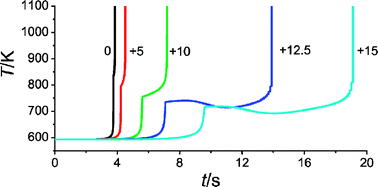The purpose of this paper is to show the application of global uncertainty analysis to comprehensive and reduced kinetic models as a tool to identify important thermochemical and reaction rate parameters as determinants of the conditions leading to autoignition. Propane oxidation is taken as the test case. The simulation of experimental investigations of the cool flames and two-stage ignitions, via the pressure–temperature ignition diagram, show that existing kinetic models for the low temperature combustion of propane at sub-atmospheric pressures reflect a greater reactivity than seems to be appropriate. That is, the models lead to a prediction of two-stage ignition at pressures somewhat lower and with ignition delays shorter than is found experimentally. The inconsistency between experiment and numerical simulation seems not to be an inherent problem of the qualitative structure of the models, but may derive from uncertainties in the parameters within the mechanism. By use of “brute force”, Morris-one-at-a-time and Monte-Carlo simulations, we show that uncertainties in only a small number of parameters, and falling well within the errors that may reasonably be assigned, can shift the response appropriately. Moreover, it appears that in the low temperature combustion regime, thermochemistry is at least as, if not more, important than the reaction rates, yet usually receives less attention within sensitivity studies. In the present case, the main factors controlling the temperature reached in the first stage of two-stage ignition and the time to ignition appear to be connected with the thermochemistry of three specific hydroperoxyalkyl radicals and their derivatives. Other factors, such as heat and mass transport are also addressed, and their effects are mitigated to some extent by evaluation of initial and revised models against experimental data for ignition delay obtained under microgravity. The results highlight more general issues that pertain to the numerical simulation of the combustion of higher hydrocarbons and contribute to the development of the protocol necessary for testing kinetic models before they are ready for use in a predictive capacity.


 Please wait while we load your content...
Please wait while we load your content...